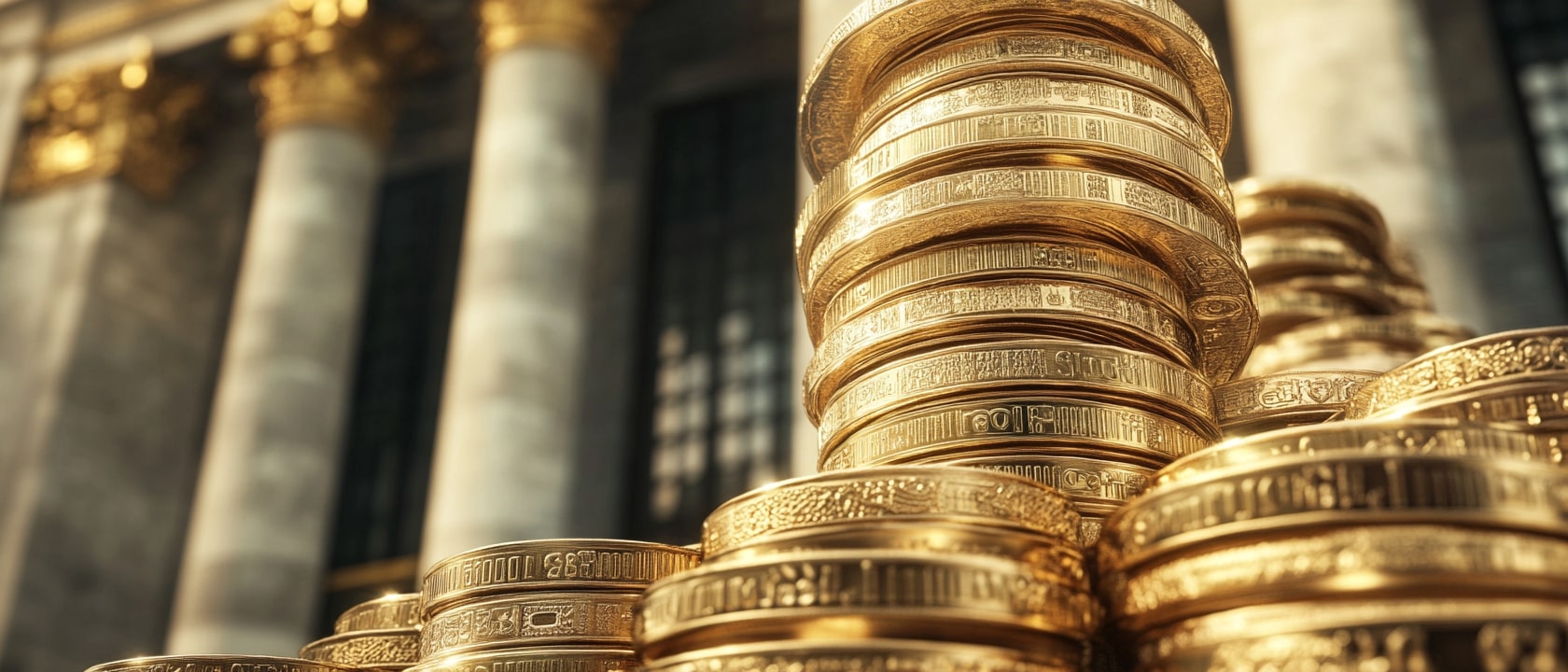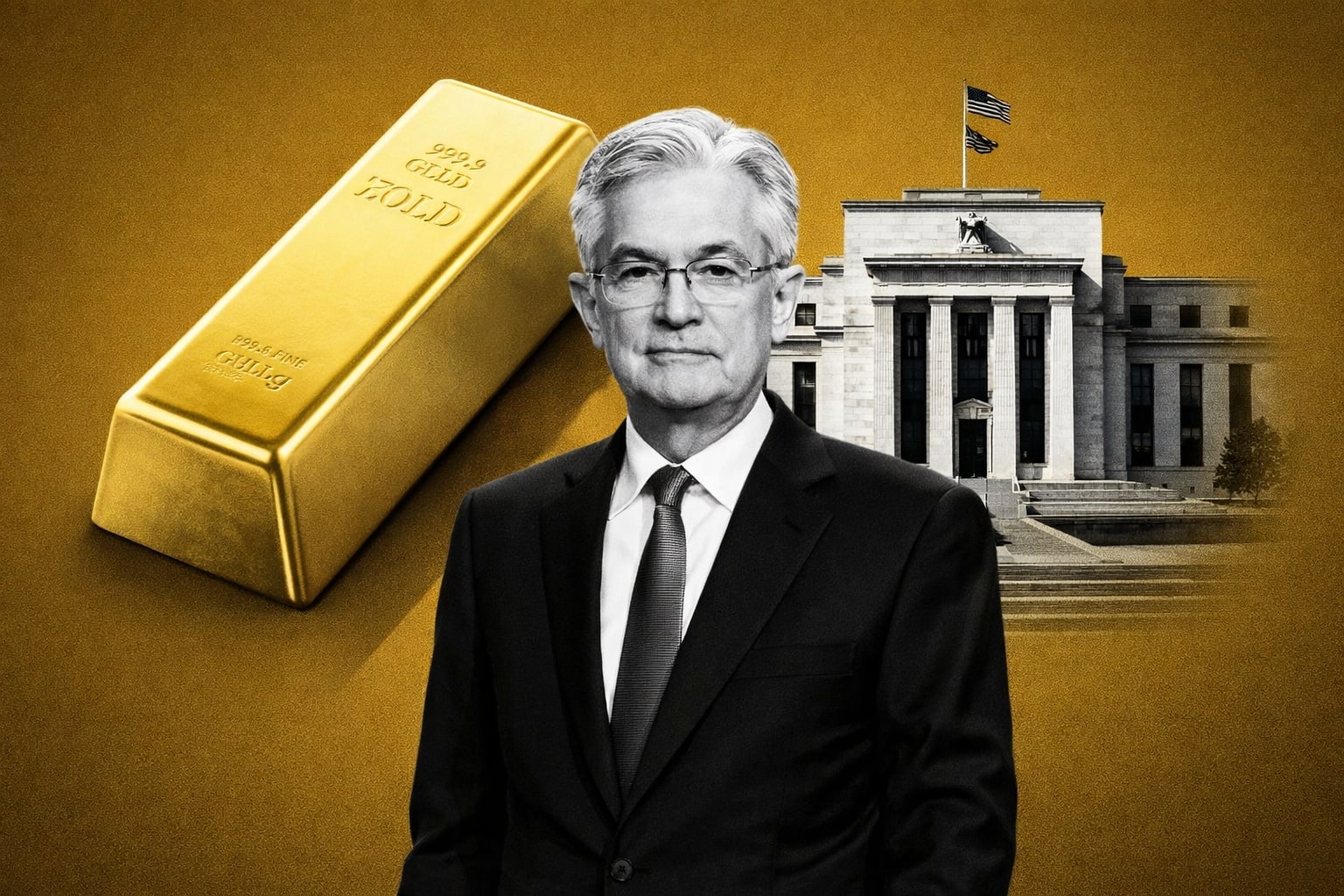
Gold Prices Surge Near 2.6K$ Record Highs as Fed Rate Cuts Boost Demand
Geopolitical Tensions, Central Bank Buying, and Technical Indicators Signal Continued Bullish Momentum for Gold | That's TradingNEWS
Fed Rate Cuts and Global Trends Drive Gold Prices Towards Record Highs
The gold market is once again attracting investors' attention as prices near historical peaks, driven by a mix of economic, geopolitical, and technical factors. The precious metal, often seen as a safe haven, has been riding a wave of demand, influenced by fluctuating bond yields, Federal Reserve rate cuts, and rising geopolitical tensions. Let's delve into the key forces shaping the current gold market landscape.
Gold Prices Supported by Fed’s Aggressive Monetary Policy
The U.S. Federal Reserve's decision to cut interest rates by 50 basis points injected fresh energy into the gold market. Historically, rate cuts lower the opportunity cost of holding non-yielding assets like gold, making it more attractive to investors. As borrowing costs decrease, liquidity increases, which typically boosts demand for assets like gold. This recent Fed decision, combined with forecasts of further rate reductions, created a favorable environment for the metal, pushing prices close to $2,600 per ounce.
However, while this aggressive monetary easing has bolstered short-term support for gold, the long-term outlook remains uncertain. Investors are weighing whether the continued interest rate cuts signal a deeper underlying weakness in the U.S. economy, potentially dampening demand for gold if economic growth falters.
Geopolitical Tensions Add a Premium to Gold Prices
The escalation of geopolitical tensions, particularly in the Middle East, has injected additional volatility into the global market. Concerns over potential disruptions in oil supplies and broader conflict escalation between Israel and Hezbollah have fueled a geopolitical risk premium in commodities, including gold. In times of heightened political instability, gold is often viewed as a refuge for investors seeking to protect wealth from market shocks.
This surge in demand has pushed gold prices to their highest levels in months, and with no clear resolution in sight, these geopolitical dynamics will likely continue to underpin the price of gold in the coming weeks.
Physical Gold Demand Fluctuates Globally
On the physical demand front, recent data reveals a mixed picture. The Swiss customs authority reported a significant drop in gold exports to China, with no shipments recorded in August, marking the first absence since January 2021. This decline reflects weaker physical demand for gold in China, driven by the high price levels, which have made gold less accessible for investors and consumers alike. Hong Kong also saw a minimal intake of gold, further signaling subdued demand in the region.
In contrast, gold exports to India surged by nearly 40%, buoyed by a reduction in the country’s gold import tax. India, the world’s second-largest gold consumer, has seen steady demand, driven by both cultural factors and the metal’s status as a hedge against inflation. As India’s economy grapples with inflationary pressures, the demand for gold as a wealth-preservation tool remains robust.
Technical Indicators Point to Overbought Conditions
From a technical perspective, gold’s current trajectory suggests the potential for both continued gains and an impending correction. The price gap between gold and its 200-week moving average is now at its widest since 2011 in absolute terms, signaling that the market may be entering overbought territory. In relative terms, this spread suggests that while the current rally may have more room to run, it also increases the risk of a sharp correction.
Gold traders should be alert to signs of growth exhaustion, which could manifest as a rapid price reversal following a final push higher. The $2,640 mark represents a key resistance level, with technical charts indicating that any move beyond this could trigger a further rally. However, support at $2,524 provides a cushion for any near-term dips, and the overall bullish momentum remains intact.
Central Bank Actions and ETF Inflows Add to Gold’s Momentum
Central banks around the world continue to accumulate gold, further supporting its price. This trend is particularly notable in light of global economic uncertainty, with central banks diversifying their reserves away from the U.S. dollar. In August, U.S.-registered gold ETFs saw net inflows of nearly 12 tons, while UK-registered funds recorded over 4 tons in inflows, according to data from the World Gold Council. This growing interest in gold ETFs reflects heightened demand from institutional investors seeking to hedge against economic and geopolitical risks.
Despite these positive trends, the high price level of gold has somewhat dampened physical demand in certain regions. Nevertheless, with central banks remaining net buyers, this institutional demand is likely to provide continued support for gold prices in the medium term.
Gold’s Cultural and Investment Significance in India
India’s deep-rooted cultural affinity for gold plays a critical role in the metal's continued demand. As a traditional store of wealth, gold is integral to many cultural practices, including weddings and religious festivals. The country’s demand for gold often peaks during these periods, further supporting prices.
Moreover, India’s ongoing battle with inflation and a depreciating rupee has only heightened gold’s appeal as a safe haven. In the past year, gold prices in India have climbed steadily, reflecting the broader global trend. As of September 2024, gold was trading at ₹58,000 per 10 grams, up from ₹50,000 at the start of the year. This increase, driven by both domestic and international factors, underscores the metal’s enduring value as an inflation hedge.
Risks and Outlook: Is Gold a Buy, Sell, or Hold?
While gold’s recent rally has been fueled by a combination of monetary easing, geopolitical risks, and central bank demand, investors must remain cautious. The metal's price is currently riding high, but overbought conditions and shifting market dynamics could trigger a correction in the near future. The key question for investors is whether gold’s safe-haven appeal will continue to outweigh these risks.
For now, gold remains a strong hedge against economic uncertainty, particularly for those concerned about inflation and geopolitical instability. However, with prices approaching record highs and technical indicators signaling caution, some investors may want to consider taking profits or at least reducing exposure to gold in the short term. The longer-term outlook remains bullish, but as always, market conditions can change rapidly.
That's TradingNEWS
Read More
-
GPIX ETF 8% Monthly Yield and S&P 500 Upside at $53
13.01.2026 · TradingNEWS ArchiveStocks
-
XRP ETFs XRPI, XRPR and Bitwise XRP Pull In $1.5B as XRP-USD Stalls Around $2.13
13.01.2026 · TradingNEWS ArchiveCrypto
-
Natural Gas Price Forecast: NG=F Climbs Off $3.00 Floor as Cold Snap and LNG Flows Lift UNG
13.01.2026 · TradingNEWS ArchiveCommodities
-
USD/JPY Price Forecast - USDJPY=X Charges Toward ¥159 as Japan Election Fears Hit the Yen
13.01.2026 · TradingNEWS ArchiveForex



















